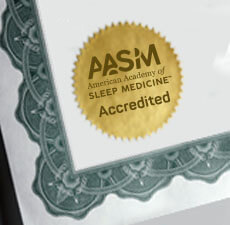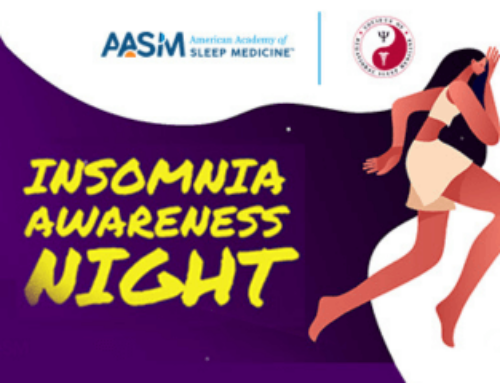WESTCHESTER, IL – A study of healthy new mothers in the April 1 issue of the journal SLEEP found that the perception of poor sleep and the conscious awareness of its impact on daytime functioning might be stronger predictors of immediate postpartum mood disturbances than actual sleep quality and quantity.
Results indicate that both objective and subjective nighttime sleep significantly worsened with decreased total sleep time and sleep efficiency after giving birth. However, variables related to the subjective perception of sleep and sleep-related daytime dysfunction were stronger predictors of postpartum mood. After giving birth, subjective total sleep time at night fell from 437 minutes to 348 minutes, and mean subjective sleep efficiency decreased from 79 percent to 66 percent. Seventeen participants (46 percent) experienced some deterioration of mood after delivery.
Lead author Bei Bei, DPsych, clinical psychologist at the University of Melbourne in Victoria, Australia, said that while pregnancy is a joyous and exciting time, it also exposes women to many stressors, including disturbed sleep.
“We were surprised that while objective sleep was not irrelevant, subjective perception of sleep shared a much stronger relationship with mood,” said Bei. “Women who are concerned about their sleep and/or mood should speak to health care professionals about cognitive-behavioral therapy, which is effective for improving both sleep and mood.”
The two-stage longitudinal study measured sleep and mood during the third trimester and one week postpartum in 44 healthy women at low risk for postpartum depression. The average age of participants was 30 years, with a range from 18 to 41 years. The sample included 20 first-time mothers (45.5 percent) and 24 mothers with multiple children (54.5 percent). The majority of participants (91 percent) were married or in a stable relationship.
Objective sleep was measured by actigraphy, and subjective sleep by the Pittsburgh Sleep Quality Index. Mood was assessed by the Depression Anxiety Stress Scale, the Hospital Anxiety Depression Scale, and the Positive and Negative Affect Schedule. Subjective sleep and mood scales were administered during both phases of the study, and objective sleep measures were recorded continuously for seven days during the third trimester and seven days after delivery.
Poorer subjective nighttime sleep both during the third trimester and after delivery was associated with worse postpartum mood. As women’s nighttime sleep worsened following delivery, their perceived sleep-related daytime dysfunction and napping behavior became relevant to their mood changes: Higher sleep-related daytime dysfunction and more frequent naps were associated with higher reported distress. Sleep obtained in a daytime nap did not appear to provide the same restorative value as sleep obtained at night.
Objective sleep deteriorated after delivery as the mean total sleep time at night fell from 428 minutes during the third trimester to 373 minutes postpartum, and average sleep efficiency dropped from 77 percent to 63 percent. The average amount of time spent awake in bed after initially falling asleep at night increased from 77 minutes to 150 minutes, and mean daily nap time increased from 32 minutes to 101 minutes.
However, evidence supporting a relationship between objective nighttime sleep and mood was weak. Lower positive affect after delivery was related to poorer overall objective sleep during the third trimester but was unrelated to objective postpartum sleep. A series of analyses also found no significant difference in postpartum mood between women who had daytime labor and those who had nighttime labor.
The authors noted that the study was unable to determine if it was poor sleep that led to emotional distress, or if poor mood caused sleep complaints. However, they proposed that women with higher levels of psychological distress might perceive their sleep to be poorer; this perception of disturbed sleep at night might exacerbate subjective stress and frustration, thus creating a potentially vicious cycle.
SLEEP is the official journal of the Associated Professional Sleep Societies (APSS), a joint venture of the American Academy of Sleep Medicine and the Sleep Research Society. The APSS publishes original findings in areas pertaining to sleep and circadian rhythms. SLEEP, a peer-reviewed scientific and medical journal, publishes 12 regular issues and one issue comprised of the abstracts presented at the SLEEP annual meeting of the APSS.
For a copy of the study, “Subjective Perception of Sleep, but not its Objective Quality, is Associated with Immediate Postpartum Mood Disturbances in Healthy Women,” or to arrange an interview with an AASM spokesperson, please contact AASM director of communications Kathleen McCann at (708) 492-0930, ext. 9316, or kmccann@aasm.org.
AASM is a professional membership organization dedicated to the advancement of sleep medicine and sleep-related research. As the national accrediting body for sleep disorders centers and laboratories for sleep related breathing disorders, the AASM promotes the highest standards of patient care. The organization serves its members and advances the field of sleep health care by setting the clinical standards for the field of sleep medicine; advocating for recognition, diagnosis and treatment of sleep disorders; educating professionals dedicated to providing optimal sleep health care and fostering the development and application of scientific knowledge.
###








